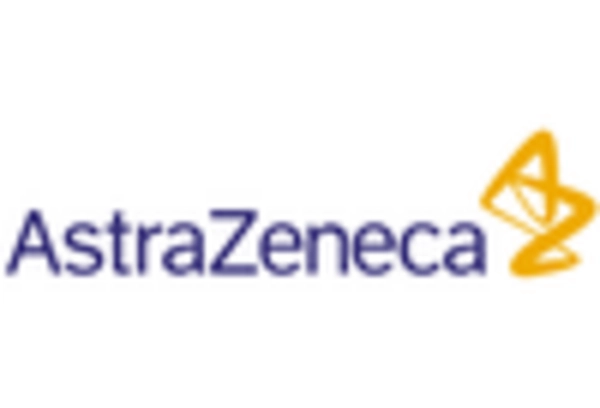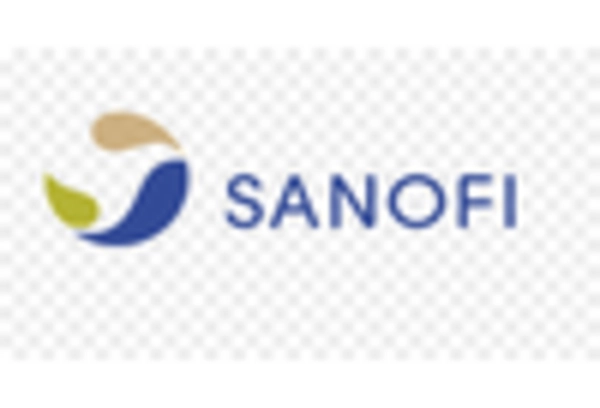Rising Incidence of Risk Factors
The deep vein-thrombosis-treatment market in Japan is experiencing growth due to the increasing prevalence of risk factors associated with DVT. Conditions such as obesity, sedentary lifestyles, and aging populations contribute to a higher incidence of DVT. According to recent health statistics, approximately 30% of the Japanese population is classified as overweight, which significantly raises the risk of developing thrombosis. Furthermore, the aging demographic, with over 28% of the population aged 65 and older, indicates a growing need for effective treatment options. This rising incidence of risk factors is likely to drive demand for innovative therapies and interventions in the deep vein-thrombosis-treatment market, as healthcare providers seek to address the needs of this vulnerable population.
Government Initiatives and Funding
Government initiatives aimed at improving healthcare infrastructure and funding for DVT treatment are significantly impacting the deep vein-thrombosis-treatment market. The Japanese government has implemented various programs to enhance awareness and prevention strategies for thromboembolic disorders. For instance, funding for research and development in thrombosis treatment has increased, with allocations reaching approximately $50 million annually. These initiatives are designed to promote innovative treatment options and improve patient access to care. As a result, the deep vein-thrombosis-treatment market is likely to benefit from enhanced resources and support, leading to improved treatment modalities and patient outcomes.
Advancements in Diagnostic Technologies
Technological innovations in diagnostic tools are playing a crucial role in shaping the deep vein-thrombosis-treatment market. Enhanced imaging techniques, such as ultrasound and magnetic resonance imaging (MRI), allow for earlier and more accurate detection of DVT. The introduction of portable diagnostic devices has also improved accessibility, enabling timely intervention. In Japan, the market for diagnostic imaging is projected to grow at a CAGR of 5.2% over the next five years, reflecting the increasing investment in healthcare technology. These advancements not only facilitate better patient outcomes but also contribute to the overall growth of the deep vein-thrombosis-treatment market by ensuring that more cases are identified and treated promptly.
Increased Focus on Preventive Healthcare
The deep vein-thrombosis-treatment market is also influenced by a growing emphasis on preventive healthcare measures. Healthcare providers in Japan are increasingly advocating for lifestyle modifications and preventive strategies to reduce the risk of DVT. Educational campaigns aimed at promoting physical activity and healthy eating habits are becoming more prevalent, with the government supporting initiatives that encourage regular health screenings. This proactive approach is likely to lead to a decrease in DVT incidence, thereby impacting the treatment market. As awareness of preventive measures continues to rise, the deep vein-thrombosis-treatment market may see a shift towards more comprehensive care models that integrate prevention with treatment.
Growing Demand for Minimally Invasive Procedures
There is a notable shift towards minimally invasive procedures in the deep vein-thrombosis-treatment market, driven by patient preferences for less traumatic treatment options. Techniques such as catheter-directed thrombolysis and endovenous laser therapy are gaining traction due to their effectiveness and reduced recovery times. In Japan, the market for minimally invasive surgical devices is expected to grow by 7% annually, reflecting the increasing acceptance of these procedures among both patients and healthcare providers. This trend suggests that the deep vein-thrombosis-treatment market will continue to evolve, with a focus on developing less invasive and more efficient treatment solutions.

















Leave a Comment